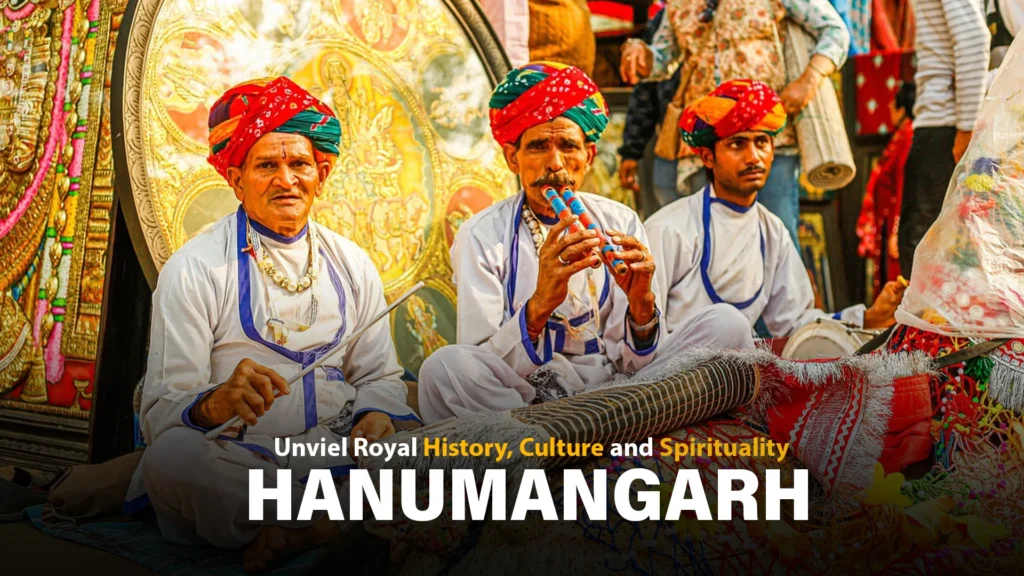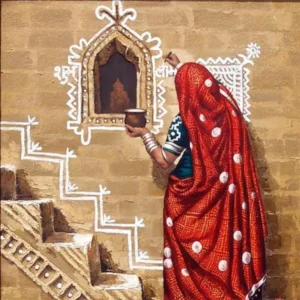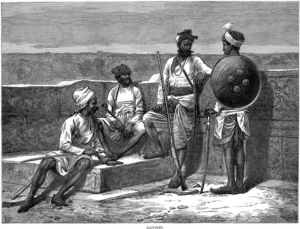Hanumangarh, a district located in the state of Rajasthan, India, boasts a rich tapestry of history, culture, and spirituality. It was established as a district on July 12, 1994, carved out from the Ganganagar district, making it the 31st district of Rajasthan. One of its notable geographical features is the Ghaggar River, which holds immense significance as it is believed to be the present form of the mythological Saraswati River.
Hanumangarh holds a deep historical background, particularly as the kingdom of the ‘Bhati’ Rajputs. These Rajputs played a significant role in shaping the region’s history, culture, and traditions.
Unveiling the History of Hanumangarh
Bhatner, now known as Hanumangarh, was founded by Bhupat, a son of the Bhati King of Jaisalmer, in the year 1295 AD. This foundation marked the beginning of a vibrant era for the region.
Bhatner, strategically positioned on the Delhi-Multan highway, served as a pivotal trading hub. Traders from Central Asia, Sindh, and Kabul traversed through Bhatner on their journey to Delhi and Agra, contributing to the region’s prosperity and cultural exchange. The renaming of Bhatner to Hanumangarh occurred after the victory of Suratsingh, the King of Bikaner, in 1805. This victory, achieved on a Tuesday, a day dedicated to Lord Hanuman, led to the adoption of the name Hanumangarh, paying homage to the deity.
Hanumangarh’s history reflects the dynamic interplay between political power, trade, and cultural influences shaping Rajasthan’s cultural heritage. In Hanumangarh, the legacy of the ‘Bhati Rajputs‘ intertwines with the broader tapestry of Rajasthan’s culture, characterized by its vibrant art, architecture, and traditions. The region’s historical significance, coupled with its artistic and cultural richness, makes it a captivating destination for travelers and historians alike.
Cultural Treasures of Hanumangarh
-
Traditional Arts, Crafts, and Cuisine
Hanumangarh is a treasure trove of traditional Rajasthani arts and crafts. The region is known for its exquisite pottery, handcrafted textiles, and intricate jewelry, reflecting the skilled craftsmanship of its artisans. The vibrant colors and intricate designs of Hanumangarh’s crafts are a testament to the region’s rich cultural heritage.
The cuisine of Hanumangarh is a delightful fusion of flavors influenced by its historical and geographical diversity. Traditional Rajasthani dishes like dal bati churma, gatte ki sabzi, and ker sangri are popular delicacies enjoyed by locals and visitors alike.
-
Festivals and Celebrations Unique to Hanumangarh
Hanumangarh celebrates a myriad of festivals and events throughout the year, each offering a glimpse into the region’s cultural vibrancy. From the colorful festivities of Holi and Diwali to the traditional dance performances during Teej and Gangaur, Hanumangarh’s calendar is filled with joyous celebrations that bring communities together.
The annual Desert Festival, held in nearby cities like Jaisalmer, showcases the rich cultural heritage of Rajasthan through music, dance, and camel races, attracting visitors from around the world.
-
Influence of Historical Civilizations on Culture
The influence of historical civilizations, such as the ancient Indus Valley civilization, can be seen in Hanumangarh’s contemporary culture. The region’s archaeological sites, including Kalibanga and Pallu, provide glimpses into ancient civilizations that once thrived in the area.
The architectural marvels of Hanumangarh, including forts, temples, and palaces, stand as testimony to the region’s rich history and cultural legacy. These historical landmarks serve as reminders of Hanumangarh’s storied past and continue to inspire artists, historians, and cultural enthusiasts alike.
Spiritual Legacy of Hanumangarh
Hanumangarh is home to a diverse array of temples, mosques, and religious sites, each contributing to the region’s spiritual legacy. The Hanumangarh Fort, dedicated to Lord Hanuman, stands as a symbol of devotion and faith, attracting pilgrims from far and wide.
Spirituality plays a pivotal role in shaping Hanumangarh’s identity, fostering a sense of unity and community among its residents. The religious diversity of Hanumangarh reflects the region’s inclusive ethos, where people of different faiths coexist harmoniously.
Hanumangarh is steeped in mythology and folklore, with tales of bravery and devotion woven into its cultural fabric. Legends of ancient saints, mystical deities, and heroic warriors abound, adding to the mystique and allure of the region’s spiritual heritage. These stories serve as reminders of Hanumangarh’s rich cultural tapestry and continue to inspire reverence and awe among its inhabitants.
-
Archaeological Marvels of Hanumangarh
Hanumangarh is renowned for its archaeological marvels, with significant excavations conducted at sites like Kalibanga and Pallu. These excavations have unearthed remnants of ancient civilizations, providing valuable insights into the region’s historical past.
Hanumangarh boasts more than 100 ‘Mounts,’ which serve as repositories of ancient civilizations. These mounts, scattered across the region, contain artifacts, structures, and traces of ancient settlements, offering a glimpse into the lives of past inhabitants. Talwara Lake holds historical significance as the site of the famous Battle of Tarain. Recent research has revealed that the area surrounding Talwara Lake was the battleground where pivotal events in Indian history unfolded, shaping the course of dynasties and empires.
Hanumangarh: Rich Historical, Cultural, and Spiritual Tapestry
Hanumangarh’s journey through history, culture, and spirituality is a testament to the resilience and diversity of Rajasthan’s heritage. From ancient civilizations to modern-day developments, Hanumangarh’s legacy continues to inspire awe and admiration.
As custodians of Hanumangarh’s heritage, it is our collective responsibility to preserve and celebrate its rich tapestry of history, culture, and spirituality. By embracing our past and nurturing our traditions, we ensure that Hanumangarh remains a beacon of inspiration for generations to come.




